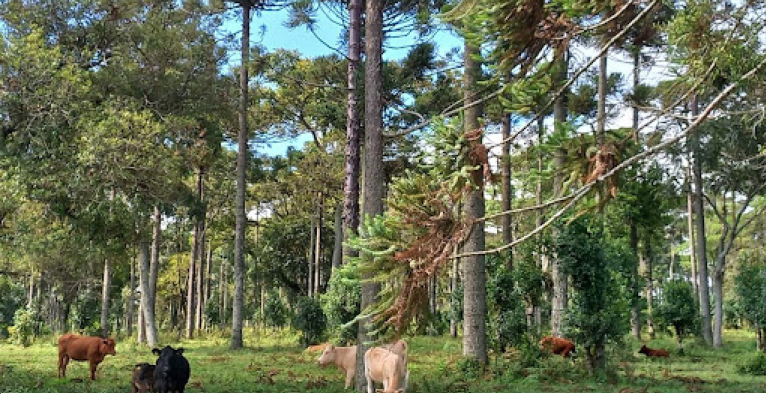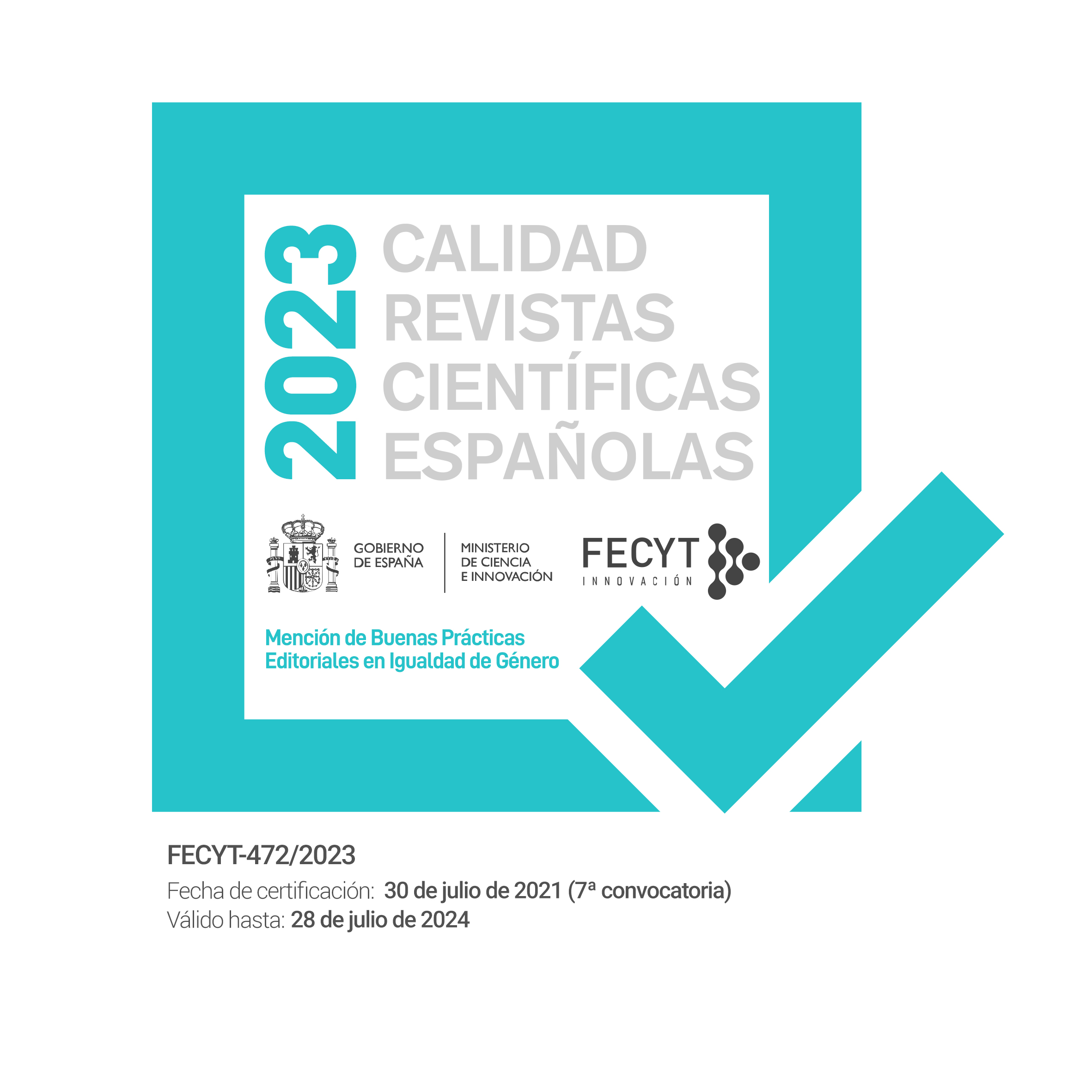Las Caívas del sur de Brasil: ¿un ejemplo de patrimonio agrario?
DOI:
https://doi.org/10.30827/erph.vi30.24247Palabras clave:
Patrimonio Agrario, Caívas, Sur de Brasil, Santa Catarina, Sistemas AgroforestalesResumen
La dinámica de la categoría patrimonio cultural ha dado lugar a numerosas variables conceptuales a lo largo del tiempo. Sin embargo, algunos bienes patrimoniales continúan sin identificación y reconocimiento. Este es el caso de los bienes patrimoniales agrarios, que históricamente han sido objeto de un proceso de marginación, que impacta reiteradamente en el mundo rural y sus protagonistas. Durante la última década, este vacío se ha llenado a raíz de la propuesta de constituir la categoría de Patrimonio Agrario, que permite la valoración de los bienes patrimoniales agrarios desde la premisa de que la agricultura es cultura. Más recientemente, el debate sobre este concepto y su utilización ha trascendido las fronteras europeas y ha llegado al Sur global, especialmente al territorio brasileño, donde los investigadores han estado trabajando en su aplicación.
Este artículo se propone analizar las caívas, abordadas como un ejemplo de patrimonio agrario ubicado en el sur de Brasil. Con este objetivo, se utilizó un enfoque cualitativo, marcado por una amplia revisión bibliográfica sobre los temas centrales de la investigación, revisión sistemática de documentos y salidas de campo para estudios in situ de las caívas ubicadas en el corte territorial previamente definido. Entre los principales resultados obtenidos destaca la identificación de un amplio abanico de bienes patrimoniales agrarios presentes en el contexto de las caívas, cuyo mantenimiento de la actividad productiva es condición fundamental para su conservación. Se concluye que las caívas configuran efectivamente un ejemplo de patrimonio agrario y que esta categoría patrimonial tiene un potencial relevante de aplicabilidad, especialmente en territorios que buscan estrategias alternativas de desarrollo.
Descargas
Citas
ALVES, E. P. M (2010). “Diversidade cultural, patrimônio cultural material e cultura popular: a Unesco e a construção de um universalismo global”. Sociedade e estado, v. 25, n. 3, pp. 539-560.
BOETZL, F.A.; KRIMMER E.; KRAUSS, J.; STEFFAN-DEWENTER I. (2018). “Agri-environmental schemes promote ground-dwelling predators in adjacent oilseed rape fields: Diversity, species traits and distancedecay functions”. Journal of Applied Ecology, n. 56, pp.10–20.
BONA, L. C.; HANISCH, A. L.; MARQUES, A. C. (2011). “Melhoramento de caívas no Planalto Norte de Santa Catarina”. Revista Agriculturas, Rio de Janeiro, n. 8, pp. 6-11.
BRASIL. (2012). Lei nº 12.651, de 25 de maio de 2012. “Dispõe sobre a proteção da vegetação nativa”. Diário Oficial da União, Brasília, DF, 28 mai 2012. Seção 1, p.1
BRASIL. (2006) Lei nº11.428, de 22 de dezembro de 2006. “Dispõe sobre a utilização e proteção da vegetação nativa do Bioma Mata Atlântica, e dá outras providências”. Diário Oficial da União, Brasília, DF. Seção 1, p.1.
CARTA DE BAEZA. (2013) Carta de Baeza sobre Patrimônio Agrário. Universidad Internacional de Andalucía.
CARVALHO, M. R. (1987). Dicionário tupi (antigo) português. Salvador: [s.n.].
CASTILLO RUIZ, J. (2015). “El Patrimonio Agrario. Razones para su reconocimiento y protección.
Desmontando prejuicios, resistencias y menosprecio”. In: CASTILLO RUIZ, J. y MARTÍNEZ YÁÑEZ, C. (Coordinadores). El Patrimonio Agrario: la construcción cultural del territorio a través de la actividad agraria. Sevilla: Universidad Internacional de Andalucía, pp. 21-73.
CASTILLO RUIZ, J. y MARTÍNEZ YÁÑEZ, C. (2014). “El Patrimonio Agrario: Definición, Caracterización y Representatividad em el Ámbito de la Unesco”. Boletín de la Asociación de Geógrafos Españoles, n. 66, pp. 105-124.
CERULLO, G.R.; EDWARDS, D.P. (2019). “Actively restoring resilience in selectively logged tropical forests”. Journal Applied Ecology, v. 56, pp.107-118.
FELICIANO, D. et al. (2018). “Which agroforestry options give the greatest soil and above ground carbon benefits in different world regions?” Agriculture, Ecosystems and Environment, Amsterdam, v. 254, pp. 117-129.
FERREIRA, A. B. H. (1999) Aurélio século XXI: o dicionário da língua portuguesa. Rio de Janeiro: Nova Fronteira.
FÖETSCH, A. A. (2014) Faxinais e caívas: identidades territoriais na região do Contestado (PR/SC). Tese (Doutorado em Geografia) – Universidade Federal do Paraná, Curitiba.
FÖETSCH, A. A. (2018). “Sistema Faxinal e áreas de caíva: identidades territoriais no espaço agrário da região do Contestado (PR/SC)”. Caderno de Geografia, v. 28, n. 53, pp. 467-489.
FONSECA, C. L. (2001) “Para além da ‘pedra e cal’: por uma concepção ampla de patrimônio”. In: Tempo Brasileiro: Patrimônio Imaterial, Out-Dez, nº 147. Rio de Janeiro: Tempo Brasileiro.
FUNARI, P. P; PELEGRINI, S. C. A. (2009) Patrimônio histórico e cultural. 2ª Ed. Rio de Janeiro: Zahar.
GARCIA, L. C. et al. (2016). Análise científica e jurídica das mudanças no Código Florestal, a recente Lei de Proteção da Vegetação Nativa. Rio de Janeiro: ABECO.
HANISCH, A. L. et al. (2010). “Estrutura e composição florística de cinco áreas de caíva no Planalto Norte de Santa Catarina”. Pesquisa Florestal Brasileira, Colombo, n. 30, pp. 303-310.
HANISCH, A. L.; PINOTTII, L. C. A.; LACERDA, A. E. B.; RADOMSKI, M. I.; NEGRELLE, R. R. B. (2021). “Impactos do pastejo do gado e do manejo da pastagem sobre a regeneração arbórea em remanescentes de Floresta Ombrófila Mista”. Ciência Florestal, Santa Maria, v. 31, n. 3, pp. 1278-1305.
HANISCH, A. L; RADOMSKI, M. I; BONA, L. C; MARQUES, A. C (2016). Melhoria da produção animal em áreas de caíva e sua contribuição para a viabilização de corredores ecológicos. DRd – Desenvolvimento Regional em debate, Canoinhas, v.6, n.2, pp.170-188.
INSTITUTO BRASILEIRO DE GEOGRAFIA E ESTATÍSTICA – IBGE. (2017). Cidades Santa Catarina. Online, 2016. Disponível em: https://cidades.ibge.gov.br/xtras/uf.php?lang=&coduf=42&search=santacatarina. [Consulta 23.06.2022]
KERSTEN, R. A.; BORGO, M.; GALVÃO, F. (2015). “Floresta Ombrófila Mista: aspectos fitogeográficos, ecológicos e métodos de estudo”. In: Eisenlohr, P.V; Felfili, J.M.; Melo, MM.R.F. et al. (Org.). Fitossociologia no Brasil: métodos e estudos de caso. Vol. 2. 1ed. Viçosa: Editora UFV, v. 2, pp. 156-182.
LACERDA, A. E. B. (2016). “Conservation strategies for Araucaria Forests in Southern Brazil: assessing current and alternative approaches”. Biotropica, New Jersey, v. 48, n. 4, pp. 537-544.
MACHADO, P. P (2004). Lideranças do Contestado: a formação e a atuação das chefias caboclas (1912- 1916). Campinas: Editora Unicamp.
MARQUES A.C., REIS, M.S., DENARDIN V.F. (2019). “Yerba mate landscapes: forest use and socioenvironmental conservation”. Ambiente e Sociedade, n. 22.
MELLO, A. J. M.; PERONI, N. (2015). “Cultural landscapes of the Araucaria Forests in the northern plateau of Santa Catarina, Brazil”. Journal of Ethnobiology and Ethnomedicine, London, v. 11, n. 51.
MORENO, G. et al. (2018). “Agroforestry systems of high nature and cultural value in Europe: provision of commercial goods and other ecosystem services”. Agroforestry System, n. 92, pp. 877–891.
PINOTTI, L. C. A.; HANISCH, A. L., NEGRELLE, R. R. B. (2018). “Impacto de sistema silvipastoril tradicional em remanescentes de Floresta Ombrófila Mista”. Floresta e Ambiente, Seropédica, v.25, n.4.
RENK, A. A. (1997) A luta da erva: um ofício étnico no Oeste catarinense. Chapecó: Grifos.
SEVEGNANI, L.; VIBRANS, A. C.; GASPER, A.L. (2013). “Considerações finais sobre a Floresta OmbrófilaMista em Santa Catarina”. In: VIBRANS, A. C.; SEVEGNANI, L.; GASPER, A. L.; LINGNER, D. V. Inventário Florístico Florestal de Santa Catarina, Vol. III, Floresta Ombrófila Mista. Blumenau: Edifurb, pp. 275-278.
SOUZA, A. F.; CORTEZ, L. S. R.; LONGHI, S. J. (2012). “Native forest management in subtropical South America: long-term effects of logging and multiple-use on forest structure and diversity”. Biodiversity and Conservation, Netherlands, v. 21, n. 8, pp. 1953-1969.
SOUZA, I.F. et al. (2010). “Using tree population size structures to assess the impacts of cattle grazing and eucalypts plantations in subtropical South America”. Biodiversity and Conservation, New York, v. 19, pp. 1683-1698.
THOMPSON, E. P. (1984). Tradición, revuelta y consciencia de clase: Estudios sobre la crisis de la sociedad preindustrial. 2. Ed. Barcelona: Editorial Critica.
TOMPOROSKI, A. A; BUENO, E. (2018). “Terra contestada: as disputas fundiárias nos vales dos Rios Negro e Iguaçu e sua influência para a deflagração do Movimento Sertanejo do Contestado, 1889-1917”. R.E.V.I – Revista de Estudos do Vale do Iguaçu, União da Vitória, n. 31, pp. 131-146.
TOMPOROSKI, A. A; LACHMAN, V; MAIA, J. C. (2020). “Patrimônio Agrário como Estratégia de Desenvolvimento da Comunidade Autônoma de Castilla-La Mancha (Espanha) e sua Aplicabilidade à Microrregião de Canoinhas (Santa Catarina, Brasil)”. Desenvolvimento em Questão. Editora Unijuí, n. 53.
TOMPOROSKI, A.A. (2013). O polvo e seus tentáculos. A Southern Brazil Lumberand Colonization Company e as transformações impingidas ao planalto contestado, 1910-1940. Tese (Doutorado em História). Florianópolis: UFSC.
UNESCO. (2003). Convenção para a Salvaguarda do Patrimônio Cultural Imaterial. Paris: Unesco. Online: <http://portal.iphan.gov.br/uploads/ckfinder/arquivos/ConvencaoSalvaguarda.pdf> [Consulta:16.09.2021].
VIBRANS, A. C. et al. (2011). “Structure of mixed ombrophyllous forests with Araucaria angustifolia (Araucariaceae) under external stress in Southern Brazil”. Revista de Biologia Tropical, San Jose, v. 59, n. 3, pp. 1371-1387.
WATZLAWICK, L. F. et al. (2011). “Estrutura, diversidade e distribuição espacial da vegetação arbórea na Floresta Ombrófila Mista em Sistema Faxinal, Rebouças (PR)”. Revista Ambiência, Guarapuava, v. 7, n. 3, pp. 415-427.

Descargas
Publicado
Cómo citar
Número
Sección
Licencia
Las/os autoras/es conservan los derechos de autoría y otorgan a la revista el derecho de primera publicación (reproducción, edición, distribución, comunicación pública y exhibición).
Más infomación en Sobre la revista > Aviso de derechos de autor/a














